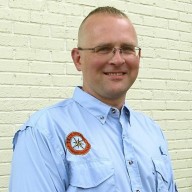Communing with the Dead
On Saturday, my postwoman handed me the latest version of Accidents in North American Mountaineering (ANAM) that I had ordered earlier in the week. When I get home tonight from a meeting with my friend, J.C., I fully intend to crack open a beer, plop down on my couch with my fresh copy, and, soon after I start to read, begin heavily marking the pages with my highlighter and pencil. Since it is the sixth year in a row that I’ve been reading this journal, I know that it will probably take me about a week to finish — And I will appreciate every minute of it.
Whoa, wait a minute, Erik, isn’t it a little weird to “appreciate” page after page of death, injury, and mortality statistics? I wrote “appreciate,” not “enjoy.” Besides, I read it … and often recommend it to my students … for very good reasons. After all, the goal is about not adding to mortality statistics in the current year.
Published annually since 1948 by the American Alpine Club (AAC), this journal seeks to compile and collate the reports of accidents in the previous year caused by such mistakes during backcountry outings as inadequate protection (like clothing or equipment), inexperience, errors in judgment, and pursuing of objectives beyond one’s abilities. Since the majority of the accidents are rock climbing related, the AAC mainly publishes the ANAM with the intention of informing climbers and preventing subsequent accidents, so each report includes a detailed analysis of what went wrong and what precautions could be taken to avoid a similar accident.
As the AAC explains on its website, “The mountains we love can be unforgiving at times. In order to be prepared for our adventures, the AAC publishes Accidents in North American Mountaineering. Our goal is to help you learn from the mistakes of others so you can come home safely and climb tomorrow.”
But don’t think that these accidents are necessarily complicated, or limited to remote mountain peaks. For example, the focus this year in the current issue is rappelling. Why? Because in each of the last two years, so many deaths and injuries (particularly to extremely experienced and internationally known climbers) were attributed to the seemingly easiest and simplest portion of a rock climb: the rappel back down. Oftentimes, too, these mistake occurred in local climbing spots … even urban climbing walls.
Reading such reports is what Laurence Gonzales, author of the influential book Deep Survival: Who Lives, Who Dies, and Why, calls “communing with the dead.” I could paraphrase what Gonzales writes, but I would only diminish his point so I will instead quote it:
If you could collect the dead around you and sit by the campfire and listen to their tales, you might find yourself in the best survival school of all. Since you can’t, read the accident reports in your chosen field of recreation … [Such reports] not only provide reading that is by turns gripping, hilarious, and heart-wrenching, but also tell you the mistakes other people have made. Then you can be on the lookout for similar situations and perhaps avoid them.
But don’t feel like you need to purchase a journal to accomplish this goal. Many popular internet search engines make it extremely easy to sort through the national, and international, news to uncovers such stories. Personally, I often spend my early Monday mornings with a fresh cup of coffee examining the previous weekend’s events (which is when most outdoor accidents occur).
Because, you see, when it comes down to it, wilderness survival training really isn’t so much about learning to deal with a life-threatening situation when it occurs, it is more about learning to avoid it in the first place.
After all, survival starts before you leave your home.

